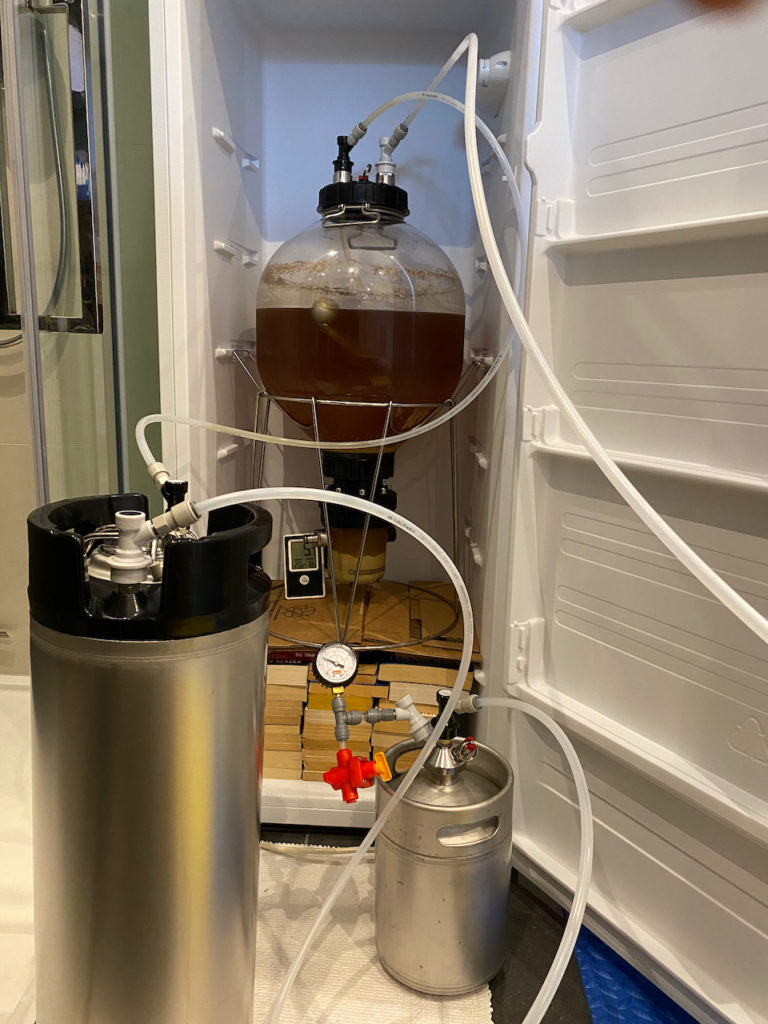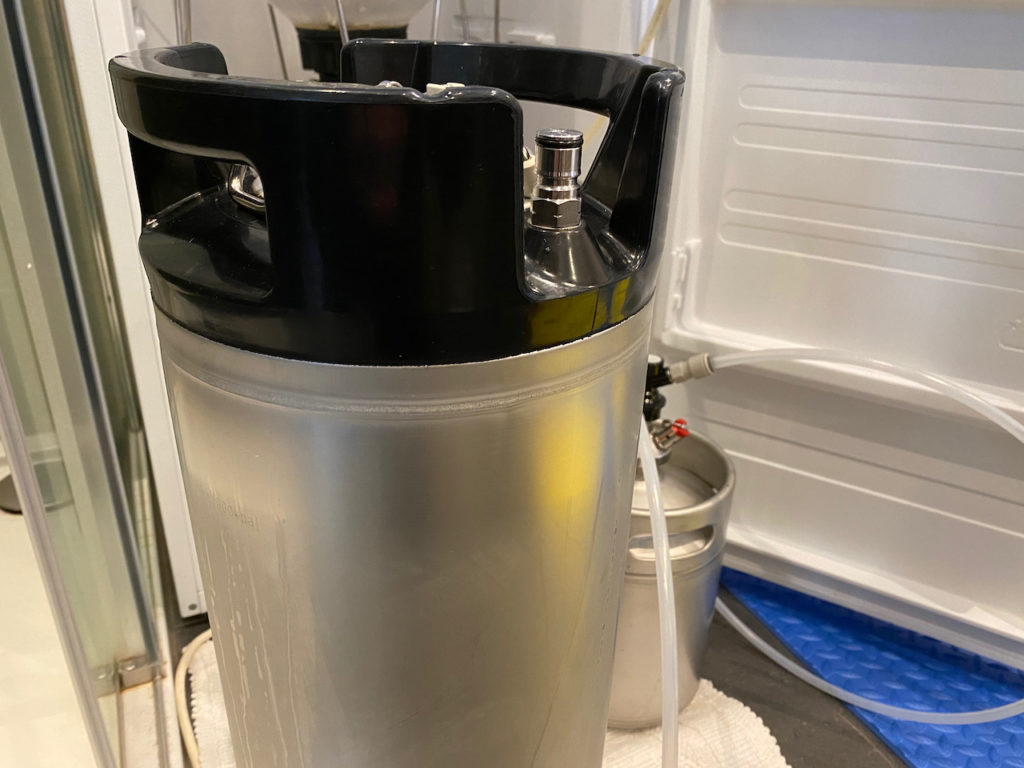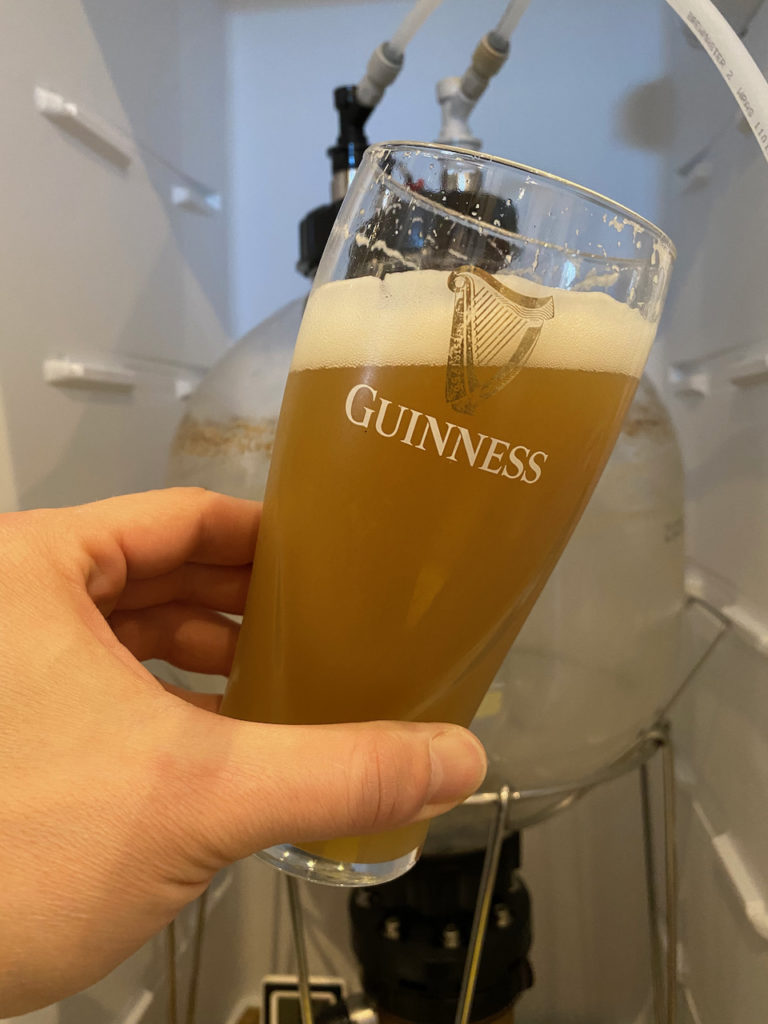As kegging time looms I’m thinking more and more about how to transfer the partially carbonated Bure Gold from cold-crashed Fermzilla to Cornelius keg without exposing it to oxygen or converting it to foam. Key to both points is keeping the pressure up and doing it slowly, taking care to purge all equipment and lines of oxygen also.
There’s a great idea in this video for using the gas-in posts of both vessels with a connecting line in order to exactly equalise the pressure between both vessels and prevent foaming, but crucially it requires connection to the CO2 cylinder via a T-piece so that the gas line maintains back-pressure, and dropping the pressure in the keg starts the siphoning process. I don’t have a gas T-piece, and expect that were I to simply connect the pressurised keg to the pressurised vessel any drop in pressure would be equalised via the gas line rather than starting the flow of beer.
Blow-Tie to the Rescue!
On to plan B then, and I’m going to use my spunding valve to maintain back-pressure in the keg while slightly increasing the pressure in the Fermzilla using my gas line and regulator. Here’s how that process breaks down in my head:
- Purge the 19 litre Corny keg of air by filling it with no-rinse sanitiser and driving that out using CO2. Repeat with secondary 5 litre Mangrove Jacks keg.
- Use spare carbonation caps to purge two transfer lines of oxygen; one with a black disconnect at each end, a second one with one black and one grey disconnect.
- Connect the Corny keg’s IN post to the Mangrove Jack’s OUT post using the grey-to-black transfer line.
- Use the CO2 line on MJ’s IN post to raise the pressure slightly to 12 PSI. Do the same on the Fermzilla, and this time leave the gas connected. Both vessels should now have identical pressure.
- Connect Fermzilla OUT post to Corny keg’s OUT post using black-to-black transfer line. Nothing should happed.
- Fully close the spunding valve and fit it to MJ’s IN post. Again, nothing should happen.
- Slowly open the spunding valve until it starts to hiss slightly. Beer should begin to flow from the Fermzilla to the Corny keg.
- Keep an eye on things in case there’s more beer in the FV than the keg can hold. In theory any beer / foam overflow should go to the Mangrove Jack’s keg, giving me a chance to shut off the transfer before it gets into the spunding valve or the pressure gauge, which I’d left attached as a sign of confidence in my approach.
Much Later …
Everything went pretty much as planned, with the only hiccup being my forgetting to switch the gas on as soon as the transfer started, and mildly panicking for 5 seconds when the spunding valve grew silent. In the end it took somewhere around 45 minutes to fill the 19 litre Corny keg to approximately 17 litres before the Fermzilla’s floating dip tube started drawing bubbles at the limit of its tether.
One thing to watch out for next time: as the level of beer drops to the conical section, the float ball may try to snag on the yeasty trub that’s deposited there which can lead to the dip tube sucking air. Easily fixed by flicking the side of the vessel, but could lead to foam in the keg if it’s not caught straight away.
Speaking of which, neither beer nor foam made their way into the secondary keg. Hurrah! I celebrated by drawing off a very hazy last pint from one of the carbonation caps on the side of the collection jar – thankfully the trub-line was just below this point so I got to enjoy a NEIPA-like hop bomb from the dregs beyond the butterfly valve which the dip-tube couldn’t reach. Very nice!


